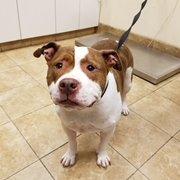
How to Avoid Pet Medication Errors
Experts at the FDA’s Center for Veterinary Medicine’s Division of Veterinary Product Safety have created helpful guidelines and a video on the topic of preventing pet medication errors.
The same types of errors that sometimes occur with human medicines can also happen with pet medicines. These mistakes can happen at the veterinary clinic, pharmacy, or at home. Here are a few of the most common to watch out for:
- Unclear or misread abbreviations and numbers in written prescriptions.
Your pet could end up with the wrong dosage of a drug if a prescription is misread. Common examples include confusing SID (once a day) with BID (twice a day) or misreading zeros and decimal points (5.0 mg vs 50 mg, for example).
- Misunderstanding drug names either in writing or in verbal orders if the drug names are similar.
- Confusing drugs when their containers or labels look similar to each other.
- Pet owners misusing or misreading syringes and other measuring devices.
How can you avoid giving your pet the wrong dose or the wrong medication? The CVM suggests asking your vet some basic but important questions like these:
- What is the name of the drug?
- Can you show me how to use this syringe?
- How much do I give my pet and how many times per day?
- Should I keep using it if my pet seems better?
- Should this drug be given with food?
- Do I store this at room temperature or in the fridge?
You can also provide useful information about your pet, such a list of other medications and any known health conditions or allergies.
At home, be sure to store your pet’s meds in a separate space away from human medications to avoid mix-ups. Keep the original container and don’t give one pet’s medicine to any other pets in the home.
Check out this video for lots of great tips:
[youtube https://www.youtube.com/watch?v=zPbso7sWUQo&w=560&h=315]



